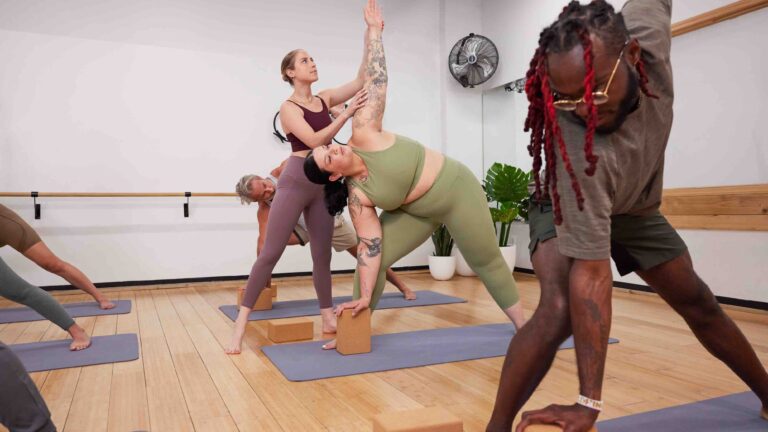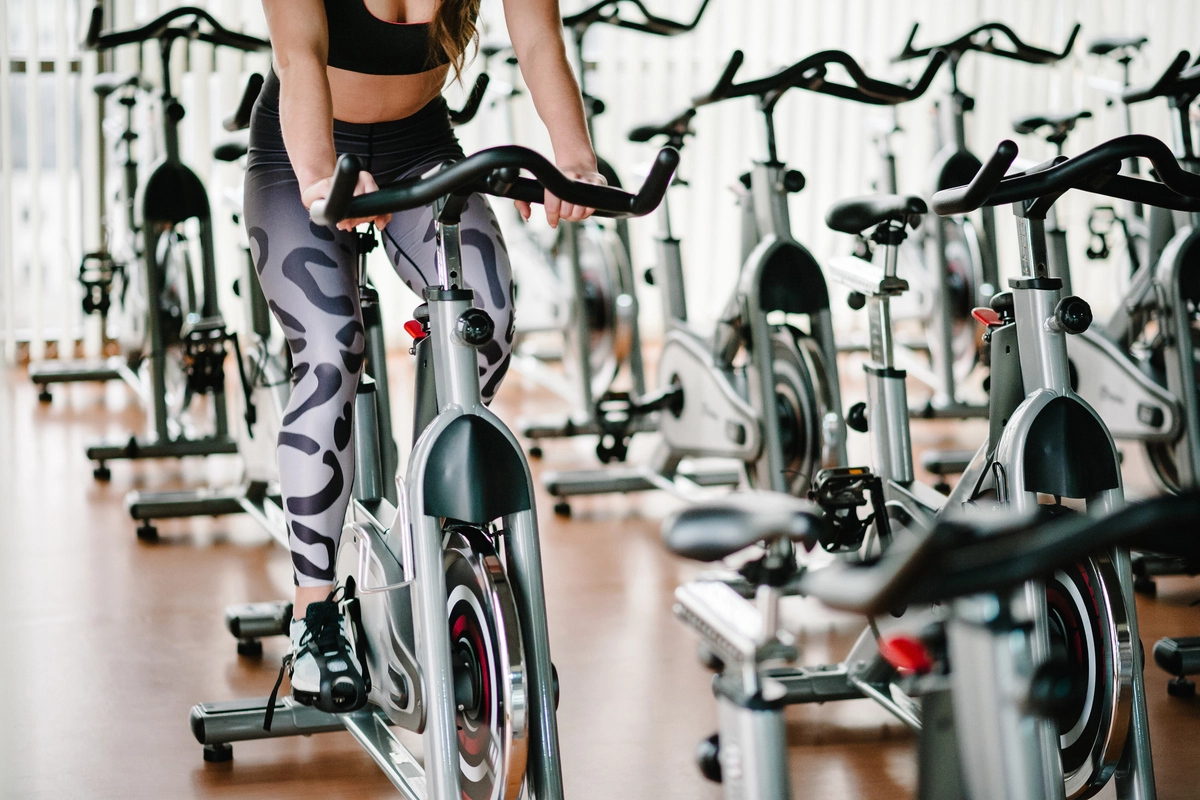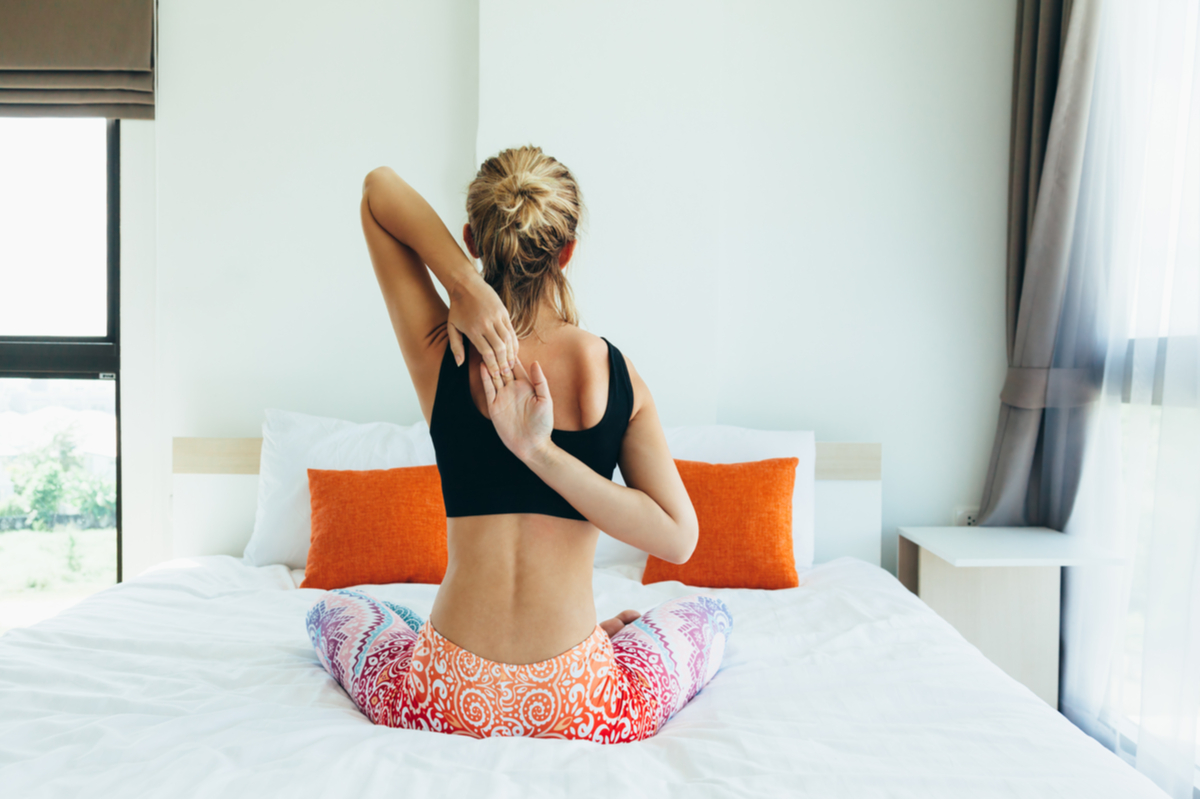With fitness, consistency and dedication are key. It takes several months to develop noticeable muscle tone, train for a half marathon, or squat your goal weight. But finding new flexibility is a little different. It does take months of consistency to take you from stiff and rigid muscles to a fluid and lithe body. But you’ll feel and notice extra flexibility after a few sessions of stretching your muscles. Maybe even after a single session!
And when you’re flexible, you’re less prone to injury, you can safely take on more activity and you will feel better in your body. Talk about a win-win-win.
You’re probably ready to add more flexibility to your day with those benefits. When people are ready to start their journey towards a more flexible body, they usually look towards two things: Yoga and stretching.
You may ask: yoga vs. stretching – which one is right for you? Practicing either option consistently improves your muscle flexibility, but they have some key differences.
Ready to get bendy? Here’s everything you need to know about the differences between yoga vs. stretching.
The critical differences between stretching and yoga
With yoga and stretching, the destination may be the same. But the journeys can be significantly different! So here are the differences between yoga vs. stretching.
Yoga:
Yoga for flexibility focuses on the three A’s: alignment, attention, and awareness.
- There is more of a conscious mindfulness connected to yoga practice. The mind-body connection is key to a successful practice, from centering your mind to purposeful breathing.
- Yoga classes tend to be longer than traditional stretching sessions, lasting anywhere from 45-90 minutes. This extra time allows your body to warm up and get a little loose before attempting deeper positions.
- There is usually a flow to movements in yoga practice. Each posture should prepare and protect your body for the next pose, like unlocking a new level.
- Yoga includes significant repetition and usually goes through yoga flows multiple times. Each time you cycle through a flow, you can feel the deepening intensity of the movements and (hopefully) can feel your body accepting the increased range of motion.
Benefits of yoga:
- It creates a solid mind-body connection.
- Yoga tones and lengthens muscles simultaneously.
- Classes are often held in a beautiful and serene studio.
- There are several instructors and studios to discover in every major city.
- Yoga offers a dependable and safe path to flexibility and strength.
Stretching:
A stretching sesh doesn’t follow a strict set of rules or parameters, so what you target and how long you stretch is up to you.
- While stretching can easily be done alone, it is often in tandem with another workout.
- There are two main types of stretching: Static stretching and dynamic stretching. Static stretching covers any sitting, standing or laying-down stretch that holds a pose without movement. Dynamic stretches incorporate stretching with walking or jogging to warm up and stretch your muscles simultaneously.
- Stretching doesn’t have a standard length of time you need to set aside for a session. Whether you have 5 minutes or an hour, you can fit in a stretch sesh.
Benefits of stretching:
- Stretching sessions can be as short as you need and can be effortlessly weaved into moments of free time.
- While props can be helpful, you don’t need anything but your body for a productive stretch.
- You can choose between static and dynamic stretching to prepare your body for action.
- There are several resources online to learn from so you can create a stretching routine for yourself.
- Stretching offers a dependable and safe path to flexibility and strength.
Similarities between yoga vs. stretching:
- Both yoga and stretching prioritize posture and technique over how deep you can force your body into a pose. When you focus on posture over depth with either practice, you can decrease the chances of overstraining.
- Both yoga and stretching can improve your flexibility with consistency and dedication.
Which style of exercise will get you more flexible: stretching or yoga?
The simple answer is – the one you do consistently! For some, booking a yoga class a few times a week is a great way to relax and get a workout in. The idea of an entire class is daunting for others, but they can always find 10-15 minutes daily to get in a stretch.
Whatever you choose, consistency is the catalyst for real improvements in flexibility.
The beauty of both: Why incorporate yoga and stretching in your weekly routine
In the words of anyone debating between brownies and ice cream: Why not both?
Yoga is a fantastic standalone workout. Stretching is a crucial step before and after any physical activity. It shouldn’t be a competition between the two – they can efficiently work together to create a flexibility-focused weekly activity routine. So let’s shift our mindset from yoga OR stretching to yoga AND stretching. Your muscles will thank you!
The only thing worth bending over backward for is your health and wellness. So find a studio specializing in yoga and stretching in your area with ClassPass!





